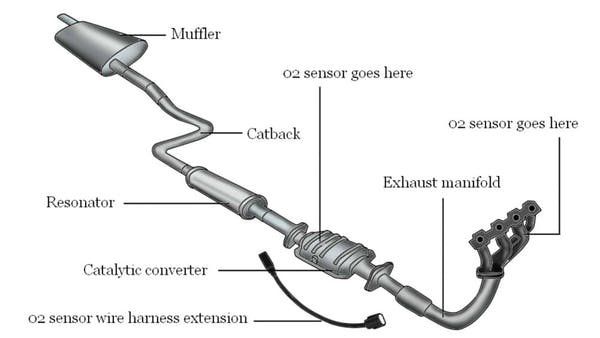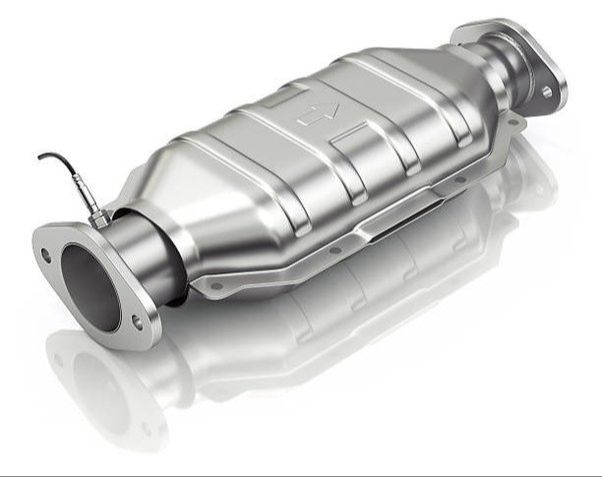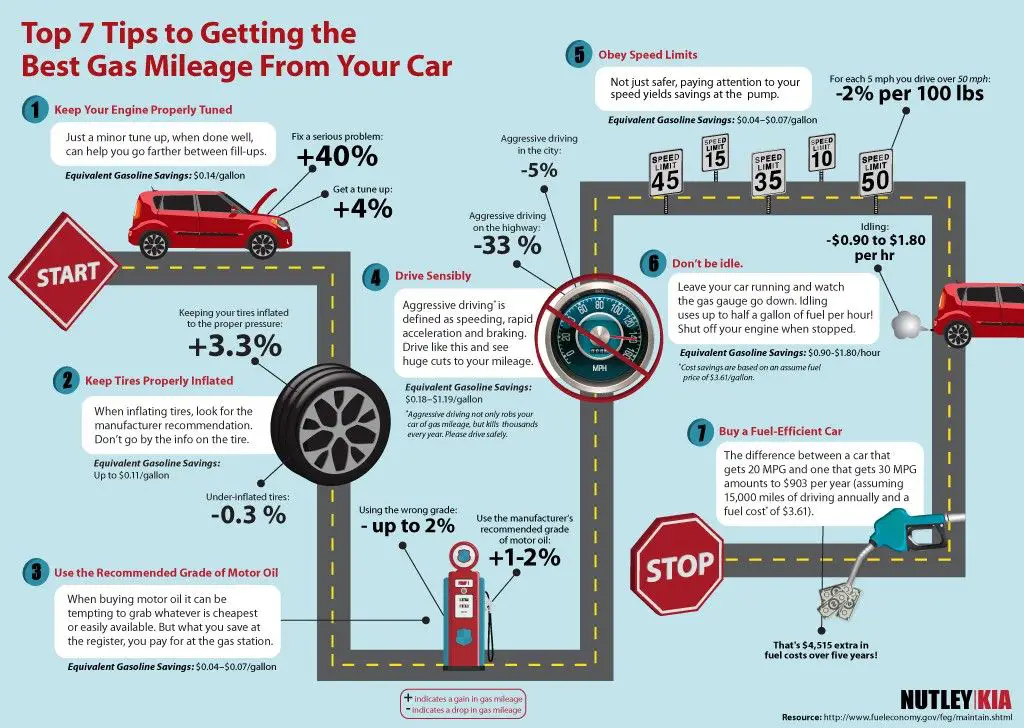What is a Cat Delete?
A catalytic converter delete, commonly known as a “cat delete”, refers to the removal or bypassing of the catalytic converter in a vehicle’s exhaust system (Source 1). The catalytic converter is an emissions control device that reduces toxic gases and pollutants in exhaust emissions. It converts harmful compounds like carbon monoxide, hydrocarbons, and nitrogen oxides into less harmful emissions like carbon dioxide, nitrogen, and water vapor.

The purpose of a cat delete is to remove the catalytic converter and replace it with a straight pipe. This eliminates the restrictive nature of the catalytic converter, allowing more exhaust gases to flow out freely. A cat delete pipe increases engine performance by reducing backpressure in the exhaust system. It can enable more horsepower and torque since exhaust gases can exit more quickly. However, it also increases air pollution since toxic emissions are no longer converted by the catalytic converter (Source 2).
Potential MPG Benefits of a Cat Delete
Removing the catalytic converter can potentially increase MPG in some vehicles by reducing back pressure on the engine. The catalytic converter creates resistance that the engine must work against, so eliminating it reduces that resistance and frees up horsepower.
According to discussions on online forums like BobistheOilGuy, some drivers claim to have seen modest MPG gains after removing their catalytic converters. Estimates range from 1-3 MPG improvements. However, gains are not guaranteed and depend on the specific vehicle and engine.
The MPG benefits are generally thought to come from the reduction in restrictive exhaust back pressure, which allows the engine to breathe and operate more efficiently. With less resistance, the engine does not have to work as hard and can utilize fuel more efficiently to produce power.
It’s important to note that MPG gains are not guaranteed with a cat delete. Individual vehicle factors like engine size, power output, and tuning play a big role. Anecdotally, some larger engines appear more likely to benefit than smaller, more efficient engines.
Potential MPG Drawbacks of a Cat Delete
While removing the catalytic converter can potentially improve gas mileage in some cases, there are also some drawbacks that can diminish or negate any MPG gains:
Loss of Low-End Torque: The catalytic converter helps provide torque at low RPMs. Removing it can result in a loss of low-end torque and power, requiring more throttle input to accelerate from a stop. This can diminish any MPG gains (Removing Catalytic Converter: Pros and Cons).
Need for Re-Tuning: To maximize any potential MPG gains from removing the catalytic converter, the engine will likely need to be re-tuned. Otherwise, the engine may run too lean, diminishing performance and fuel economy. Re-tuning adds cost and complexity (Does removing the catalytic converter degrade or improve gas mileage?).
Diminished Gains Over Time: Removing the catalytic converter can initially provide a modest improvement in MPG. However, over time, as engine components wear, any gains are likely to diminish. The catalytic converter helps compensate for a worn engine (The Pros and Cons of Removing a Catalytic Converter).
Legal Considerations of Cat Deletes
Removing or tampering with a catalytic converter is illegal under federal law in the United States. The Environmental Protection Agency (EPA) prohibits the removal of catalytic converters under the Clean Air Act. The catalytic converter helps reduce toxic emissions from the exhaust system, so removing it violates emissions regulations.
All 50 states have adopted the EPA’s emissions standards. Therefore, it is illegal to remove or tamper with the catalytic converter in any state. Those who violate these laws can face fines up to $2,500 per violation along with possible imprisonment [1]. In California specifically, fines can be as high as $1,000 for first time offenders with the fine doubling for subsequent offenses [2].

While cat deletes may provide some MPG benefits, it is not worth the legal risks and penalties. Those looking to improve MPG should explore legal alternatives that do not violate emissions standards.
Impact on Emissions
Removing a catalytic converter significantly increases vehicle emissions, including hydrocarbons, nitrogen oxides, and carbon monoxide. According to the Environmental Protection Agency (EPA), catalytic converters can reduce vehicle emissions by up to 90%.
Without a catalytic converter, the exhaust from an engine contains high levels of hydrocarbons that have not been combusted. Hydrocarbons react with nitrogen oxides in sunlight to produce ground-level ozone, a major component of smog. Nitrogen oxides also contribute to acid rain and ecosystem damage.
Carbon monoxide is a poisonous gas that reduces the blood’s ability to transport oxygen. It can cause dizziness, confusion, unconsciousness, and even death in high concentrations. Catalytic converters oxidize carbon monoxide into much less toxic carbon dioxide.
The increase in emissions after a cat delete can be significant. One study found over a 90% increase in hydrocarbons and carbon monoxide, and over 60% increase in nitrogen oxides [1]. This level of emissions would fail inspection and registration requirements in most areas.
Alternatives for Improving MPG
While a cat delete may provide minor MPG improvements in some cases, there are other modifications that can more substantially improve fuel efficiency without compromising emissions compliance:
Engine Tuning: Reprogramming the ECU (engine control unit) with a tune optimized for efficiency can provide MPG gains of 5-15%. This allows adjusting fuel trim, spark timing, shift points, and other parameters to reduce waste and maximize economy. Proper ECU tuning is one of the most effective ways to increase MPG.
Weight Reduction: Removing unnecessary cargo, components, and sound deadening can reduce vehicle weight by 100 lbs or more. According to the EPA, each 100 lbs removed improves fuel economy by 1-2%. Lighter vehicles require less energy to accelerate and move.
Aerodynamic Improvements: Reducing drag with air dams, skirts, and revised body panels/shapes can increase MPG by 3-5%. Smoothing airflow underneath and around the vehicle decreases resistance. Aftermarket body kits and lower ride heights also improve aerodynamics.
In summary, optimized engine tuning, weight reduction, and aerodynamic refinements can substantially boost MPG without compromising emissions compliance or engine longevity.
Long-Term Effects on Engine
Removing the catalytic converter can potentially cause damage to the engine over time. The catalytic converter helps remove harmful emissions like carbon monoxide, nitrogen oxides, and hydrocarbons from the exhaust. Without the catalytic converter, these emissions can build up inside the engine and combustion chambers, leading to reduced engine performance and efficiency.

One long-term effect is faster deterioration of engine components like piston rings, cylinder walls, and valves. These components are exposed to higher levels of contaminants without the catalytic converter filtering the exhaust gasses. The contaminants can cause corrosion and wear which reduces engine power over time [1].
Another potential issue is oil contamination. Unburnt fuel and combustion byproducts can condense and mix with engine oil without getting filtered by the catalytic converter. This contaminated oil can lead to increased friction and sludge buildup inside the engine, potentially shortening the engine’s lifespan.
Additionally, the oxygen sensor may be affected over time without the catalytic converter. The oxygen sensor helps regulate the air-fuel mixture, but depends on the catalytic converter to function properly. Without it, the oxygen sensor can get contaminated and provide inaccurate readings leading to a less efficient burn [2].
While removing the catalytic converter may provide some short-term gains, it is clear that long-term engine durability and performance may suffer. Vehicle owners should carefully weigh these potential drawbacks before making the decision to remove this important emissions component.
Optimal Implementation for MPG Gains
While a catalytic converter delete can potentially increase MPG in some situations, proper implementation is key to maximizing potential fuel economy gains. Simply removing the catalytic converter without tuning the engine properly can result in reduced MPG.
According to one source, “The CAT might be a restriction at maximum engine output (max load & rpm), but if you’re driving to maximize fuel economy, flow restriction is not your primary concern. Proper tuning to optimize fuel economy after removing the cat is important” (Source).
After a cat delete, it’s essential to get your vehicle properly tuned to account for the change in backpressure and airflow. A qualified performance shop can tune the engine for optimal fuel economy rather than maximum power. This involves carefully calibrating aspects like fuel trims, spark timing, throttle response and transmission shift points.
Adjusting your driving style can also help maximize MPG gains from a cat delete. Focus on smooth acceleration, maintaining consistent speeds, anticipating stops, and avoiding excessive idling. The highest MPG benefits will come from lower RPM cruising, not aggressive high-load driving.
With proper implementation and driving technique adjustments, a catalytic converter removal can provide a slight boost to fuel efficiency. However gains are often modest and need to be weighed against potential downsides.
Weighing the Pros and Cons
When considering a catalytic converter delete, it’s important to carefully weigh the potential benefits against the possible drawbacks. On the pro side, removing the catalytic converter can lead to a louder, more powerful engine sound and potentially better gas mileage by reducing exhaust backpressure. Some sources estimate 1-3 mpg gains from a cat delete, though the impact can vary considerably based on engine and vehicle specifics (source).
However, there are also some significant cons to be aware of. A cat delete is illegal in many states due to the negative impact on emissions (source). Eliminating the catalytic converter can increase emissions of harmful pollutants like nitrogen oxides and hydrocarbons. It also triggers an engine check light and failed emissions testing. Additionally, long-term effects on engine durability are a concern, as the catalytic converter helps protect the engine from excessive heat.
Overall, while a modest mpg boost may be possible, a cat delete involves legal risks, reduced emissions control, and potential long-term reliability issues. Carefully weighing out the limited benefits against the drawbacks is recommended before considering this modification.
Conclusions & How to Improve MPG
In summary, removing your catalytic converter, also known as a “cat delete”, can potentially increase MPG but has downsides to consider. While eliminating the catalytic converter reduces exhaust backpressure and engine load, resulting in minor MPG gains, it also increases harmful emissions. Furthermore, a cat delete may not yield significant long-term fuel economy benefits compared to proper maintenance and driving habits.

For those seeking to improve MPG without compromising emissions standards, here are some recommended alternatives:
- Perform regular engine tune-ups and maintenance
- Check tire pressure frequently to ensure proper inflation
- Use the recommended grade of motor oil
- Remove unnecessary weight from the vehicle
- Improve driving habits to avoid rapid acceleration and braking
- Invest in aerodynamic improvements like air dams
- Upgrade to low-rolling resistance tires
While a cat delete may provide minor MPG gains, more eco-friendly options exist. Focus on proper maintenance and adjust driving style for the best long-term fuel economy improvements.

